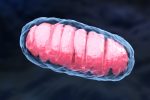SBT-272, Supporting Mitochondria, Eases Disease Symptoms in Mice

Treatment with an investigational medicine called SBT-272 markedly eased signs of Parkinson’s disease in a mouse model, according to its developer Stealth BioTherapeutics.
“We are excited about the promise of SBT-272 as a potential therapeutic for neurodegenerative diseases,” Reenie McCarthy, the CEO of Stealth, said in a press release.
SBT-272 is thought to work by increasing the activity of mitochondria, cellular compartments best known for providing cells with energy. Problems with mitochondrial function are thought to contribute to disease progression in Parkinson’s and other neurodegenerative disorders.
Preclinical study findings were presented at the International Parkinson and Movement Disorder Society Virtual Congress 2021.
In order to induce Parkinson’s-like disease in mice, researchers injected the mice’s brains with a virus that infects cells and forces them to produce A53T alpha-synuclein, a mutated form of the alpha-synuclein protein that is associated with Parkinson’s. This protein forms aggregates, or clumps, in brain cells, which is thought to drive their death.
Infected mice displayed signs characteristic of Parkinson’s, including substantial loss of dopamine-producing neurons. The death and dysfunction of these brain cells is what causes Parkinson’s.
The mice also had notable alpha-synuclein aggregates, as well as signs of neuroinflammation (inflammation in the brain), which is believed to contribute to disease progression in Parkinson’s and other neurological disorders.
When the mice were treated daily with two different doses of SBT-272, these signs were markedly diminished: treatment aided survival of dopamine-producing neurons, and led to a lesser aggregation of alpha-synuclein.
The higher tested dose also significantly reduced the levels of two markers of brain inflammation.
Collectively, these data suggest that SBT-272 has a neuroprotective effect in Parkinson’s, meaning that it might prevent disease-related damage to cells in the brain, Stealth reported.
In addition to these findings, SBT-272 has shown promise in preclinical animal models of amyotrophic lateral sclerosis (ALS).
Stealth is planning to launch initial trials of the investigational medication in people next year.
“These encouraging data in a model of PD [Parkinson’s disease] add to our growing body of evidence in preclinical models of ALS and other neurodegenerative disorders, providing early therapeutic directions as we plan to advance SBT-272 in dose-ranging Phase 1 clinical studies early next year in addition to initiating chronic toxicology studies to support Phase 2 initiation,” McCarthy said.







